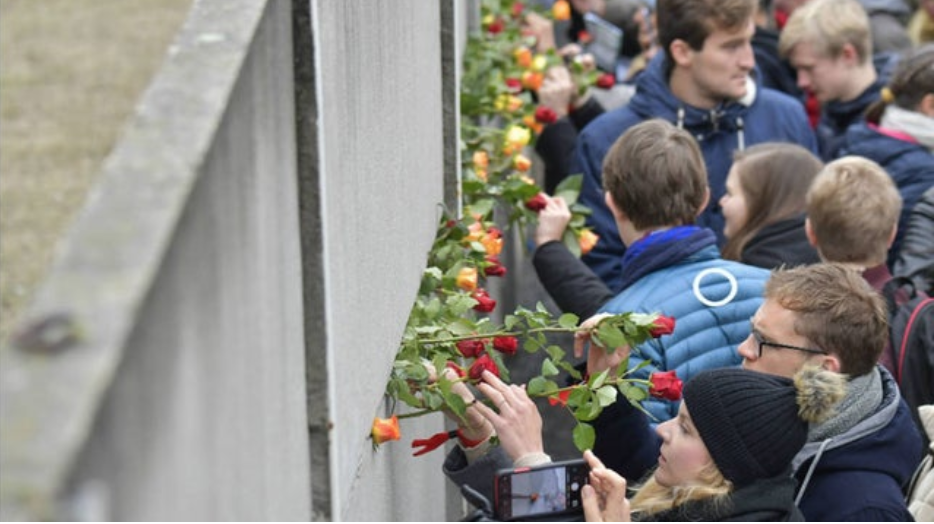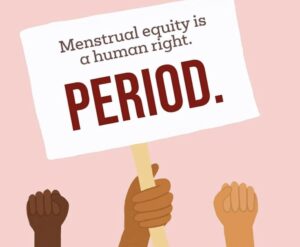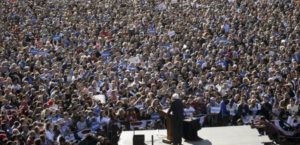
On November 9, German Chancellor Angela Merkel and other European leaders gathered at the Berlin Wall memorial with roses to commemorate the 30th anniversary of the wall’s fall. On what is usually a day of celebration, Merkel cautioned: “The values on which Europe is founded — freedom, democracy, equality, the rule of law, human rights — they are anything but self-evident and they have to be revitalized and defended time and time again.” German President Frank-Walter Steinmeier’s remarks reflected her cautionary words: “Liberal democracy is being challenged and questioned.”
It seems that their worries were not unwarranted. That day is also the anniversary of the Kristallnacht, the Night of Broken Glass, which was an attack on Jewish homes, synagogues, and businesses throughout Nazi Germany in 1938. While Merkel was giving her speech on this historic day, a neo-Nazi group marched down the streets of Bielefeld in support of a Holocaust denier. Unsurprisingly, the relatively recent rise of the German far-right has been attracting international attention given the country’s troubling history. The German far-right hasn’t only seen an institutional resurgence with the Alternative for Germany (AfD) party, which is polling over 20% in eastern states, but the country has also witnessed a series of far-right movements: anti-immigrant protests and violence in Chemnitz last year and a shooting at a synagogue in Halle last month in October. Notably, Bielefeld, Chemnitz and Halle are all located in the eastern states of the former German Democratic Republic.
Although the fall of the Berlin Wall is often considered synonymous with the liberation of the GDR, this rosy picture of German reunification is an inaccurate portrayal of the complex reality of confusion and uncertainty that ensued. The elimination of the physical, institutional, and ideological wall between the two parts of Germany was more of an annexation of East Germany by West Germany rather than a fusion of the two. In the summer of 1990, the Treuhand Agency was created to privatize previously state-owned East German companies and integrate them into the union. The East German currency, the GDR Mark, was also equated to the West German currency Deutsche Mark overnight, despite the fact that the Deutsche Mark was worth four times as much. As a result, unemployment soared, GDR state workers were laid off, and the sudden increase in costs forced many companies to file for bankruptcy.
This should in no way discredit the significance of the end of an oppressive authoritarian regime or the important opportunities it brought about for improved welfare and livelihood for East Germans. However, it doesn’t deny the fact that reunification, at least in its early stages, was a tumultuous process that created hardship and challenges for many East Germans trying to redefine their place in the new country. This could be a reality that escapes some non-eastern Germans who do not have first-hand experience of the sweeping economic changes that were implemented. According to The Economist, reunification is still viewed differently: half of western Germans consider the East a success while only one-third of eastern Germans say the same.
Three decades after reunification, the disparity between eastern and western German economies has certainly been dramatically reduced. New markets opened to the former socialist state and the country poured huge amounts of investment into the development of eastern infrastructure, but a gap still remains. Compared to the rest of the country, the eastern states continue to have higher overall rates of underemployment with a 20% lower GDP per employee, and they are home to significantly fewer high-value companies in a country of industrial titans. This economic disparity is also accompanied by an imbalance in political power. In Merkel’s 16-person cabinet, only one person is an eastern German, even though eastern Germans constitute approximately 17% of the national population.
Merkel’s open-door immigration policy has been one of the triggers for much of the recent far-right violence, but racism and xenophobia are likely a by-product of other systemic issues. The financial anxiety faced by some eastern Germans in an economy that lags behind, the political marginalization of the region, and the complicated experiences with reunification might be possible explanations for oppositional sentiments towards the rest of the country, making them susceptible to right-wing extremism. As they increasingly make their voices heard, far-right eastern Germans put the German democracy in a delicate position where it must reconcile between the need to address their grievances and the urgency of combating hatred and intolerance. With a political divide that is persisting and possibly widening, Germany continues to grapple with its dual post-war identity.
Lilian Wang



